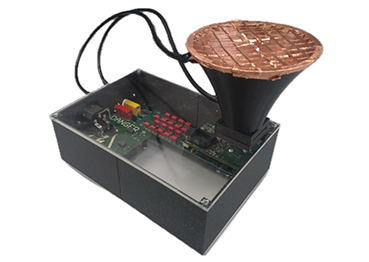

Present all over the globe in varying concentrations, uranium, essentially composed of the isotope 238, disintegrates in a radioactive chain of 13 radioelements known as «U-238 daughters», finally arriving at the stable lead 206.
One of the daughters is radon. Chemically neutral, radon can diffuse and, rock permitting (porous rock, for example), be released into the open air. In its chemical state, radon is not harmful, as it is an inert noble gas that does not settle in the lungs. However, once disintegrated, it becomes polonium 218, then rapidly lead 214 and so on, transforming into other radioactive chemical elements. The latter are not chemically neutral, however, and attach themselves to aerosols in the air by electronic bonding. It is these aerosols that are harmful to health, because once inhaled, they remain in the walls of the respiratory tract.
The aim of the project, initiated during a bachelor’s thesis, is to design the electronics to be associated with a new sensor for measuring the concentration of radon daughters. The measuring device consists of the following elements: an electrostatic lens capable of directing the radioactive particles towards the sensor, and a detection and counting system.
Project partner(s)
Project leader - team
Nicola Giandomenico
(HEPIA),
Bryan Musy
(HEPIA),
Romain Grobéty
(HEPIA),
Victor Cochet
(HEPIA)
